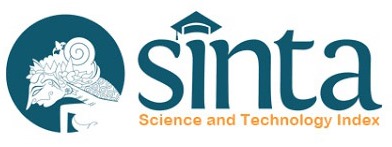Online Submissions
Already have a Username/Password for Squalen Bulletin of Marine and Fisheries Postharvest and Biotechnology?
Go to Login
Need a Username/Password?
Go to Registration
Registration and login are required to submit items online and to check the status of current submissions.
Author Guidelines
- Scope: research paper, short communication and reviews (by invitation) in the field of postharvest, food safety and environment, and bio-discovery of marine and fisheries.
- Language: English. It is preferable that manuscripts are professionally edited. The abbreviated name or expression should be cited in full at first usage, followed by the accepted abbreviation in parentheses. Metric SI units should generally be used. Chemical formulas and solutions must specify the form used, e.g. anhydrous or hydrated and the concentration must be in clearly defined units. Common species names should be followed by the Latin binomial (Italic) at the first mention. We highly encourageauthors whose native language other than English, to use a professional English editing service for copyediting and/or proofreading purposes to ensure the readability of the manuscript.
- Manuscript: should be prepared max. 15 pages, composed of 2000-3000 words for a short communication; 4000-5000 words for a research article or 6000-8000 words for a review (minimum of 50 references), double-spaced (except for title, tables, figures, and bibliography which is prepared in single-spaced) in Microsoft Word on A4 paper, font Arial 10 (except for abstract, tables and figures, please use Arial 8). Please provide continuous line numbers in your submitted manuscript to ease the reviewing process.
Research Paper manuscripts should contain the following sections :
- Title: brief, concise (do not exceed 15 words) and informative, reflecting the manuscript material. Avoid the abbreviation and formula where possible. Author’s name, institution, and address are written under the title. Author names should include first name and last name. Middle name should be abbreviated. Authors with one name only should use their first name as surname. Example: Sukarno Sukarno. Affiliation numbers are not needed if all authors affiliated to the same institution.
- Abstract: a concise and factual abstract is required. The abstract should state briefly the purpose of research, the principle method, important findings and conclusion. Non-standard or uncommon abbreviation should be avoided, but if essential they must be defined at their first mention in the abstract itself. Abstract should not exceed 250 words.
- Key words : contain 3 to 5 words, should represent important terms related to the topic of research.
- Introduction: state the background and objective(s) of the work, mention previous relevant works (by your group or others), identify the gap of the research, explain how your study provides solution to the problem and describe the novelty of the current study. Ideally, introduction section should not exceed 1000 words.
- Material and Methods: provide sufficient detail to allow the work to be reproduced. Methods already published should be indicated by a reference; only relevant modification should be described. Mention explicitly all parameters used in the study, such as pH, temperature, time, concentration, etc. Mention the brand and purity of the important chemicals used in the study. Mention the brand and series of the important equipment used, such as HPLC, spectrometer, NMR, FT-IR, MS, etc.
- Results and Discussion: results should be clear and concise, compare the findings with those of other studies, describe any result differences if any, and propose the cause of the differences. Discussion should elaborate the significance of the results of the work, not repeat them. Avoid extensive citation and discussion of published literature. Tables: Short, clear and must be able to stand alone.
- Table should be prepared in MS Word using single-space and horizontal lines only. Indicate the statistical analysis by providing standard deviation and denote letters or signs to mark significant differences. Table header should be printed in bold with light grey shading. Table should have a title and number in sequence and are placed above the table, font (Arial 8).
- Figures and graphics: Prepared in appropriate pattern with only black and white versions. Graphics should be prepared in MS Excel. Indicate the statistical analysis by providing standard deviation and denote letters or signs to mark significant differences. Figure should have a title and number in sequence. Figure and graphics title and their explanation or notes are placed below the figures or graphics, font (Arial 8).
- Pictures/photograph: Prepared in contrast color or B/W. Pictures/photographs should have a title and number in sequence. TIFF: color or grayscale photographs (halftones) always use a minimum of 300 dpi; bitmapped line drawings use a minimum of 1000 dpi; combinations bitmapped line/halftone (color or grayscale) a minimum of 500 dpi is required.
- Conclusion: Concise considering the title, objectives and research results.
- Acknowledgement: Collate acknowledgements, if any, in separate sections at the end of the article before the references and do not, therefore, include them on the title page, as a footnote to the title or otherwise. Acknowledgment should indicate grant number(s) and the assistance of anyone involved during the analysis other than authors.
- Bibliography: Follow the APA (American Psychological Association) 7th style referencing. The use of a reference management, such as Endnote and Mendeley is highly recommended. Please use at least 70% of the latest and primary references (no more than 5 years).
- Supplementary materials (optional): should be prepared in a separate file than that of manuscript, consist of additional data and relevant material supporting the main article, such as chromatograms, photographs of specimens, raw data etc.
Review paper, manuscript should be written as a continuous articles sub headings that reflect the matter discussed, not necessarily the same as the sub heading of the research paper (Abstract, Introduction, Discussion, Conclusion, Acknowledgements, References)
- Submission of manuscript: A soft copy of the manuscript should be submitted electronically by Open Journal System (OJS) at: www.bbp4b.litbang.kkp.go.id/squalen-bulletin. Manuscript should be uploaded as Word (.docx) files (not write-protected) or/ and MS Excel for the figures or graphics. The text file must contain the entire manuscript including title page, abstract, keywords, text, references, tables, and figures. All the manuscripts submitted to ‘Squalen: Bulletin of Marine and Fisheries Postharvest and Biotechnology’ will be reviewed by peer reviewers and editors.
- Cover Letter should be addressed to the chief editor, indicating the subject area of the submitted manuscript, novelty and significance of the study, and proposed reviewers.
- Manuscript which does not meet the above requirements will be rejected.
- Authors' Statement has to be attached at submission, indicating agreement of copyright transfer to the publisher, originality of paper, and author contributions. We highly encourage that all authors read the manuscript and actively contribute to the editing process prior to submission to ensure the readability of the manuscript.
- Article Template can be downloaded here
- Manuscript which does not meet the above requirements will be rejected.
- Authors' Statement has to be attached at submission and can be downloaded here
Status of manuscript
- Revise and resubmit: manuscript has been reviewed by the managing editor, has the potential to be published, but additional data/information need to be conducted before resubmission.
- Revisions required: manuscript has been reviewed by at least two peer reviewers, revisions need to be carried out in accordance to the reviewer suggestions.
- Accepted for publication: manuscript has met the requirements of the editors and peer reviewers.
- Copyediting: manuscript has been edited by a copyeditor, authors should make a revision according to the suggestions.
- Proofreading: manuscript has been edited by a proofreader, authors should make a revision according to the suggestions.
- Published online: manuscript has been published online, but has not been assigned an issue and page numbers. Minor corrections are still possible at this stage.
- Published: final version of the manuscript has been published and is available for download.
Submission Preparation Checklist
As part of the submission process, authors are required to check off their submission's compliance with all of the following items, and submissions may be returned to authors that do not adhere to these guidelines.
- Cover Letter
- Manuscript is in the correct format based on the Article Template for this Journal
- Authors' Statement
- Ethical Clearance (if any)
- Attach the similarity checking results on supplementary file
Privacy Statement
The names and email addresses entered in this journal site will be used exclusively for the stated purposes of this journal and will not be made available for any other purpose or to any other party.










